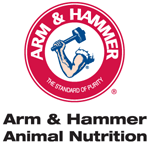
 Milk and feed price volatility-and their associated challenges-aren't going to disappear anytime soon. While it's essential to monitor these factors, it's easy for dairy producers to hone in on expenses during tough economic times and overlook the larger profitability picture.
Milk and feed price volatility-and their associated challenges-aren't going to disappear anytime soon. While it's essential to monitor these factors, it's easy for dairy producers to hone in on expenses during tough economic times and overlook the larger profitability picture.For example, "A customer recently called about the high cost of their ration compared to 2012 and wanted to know what they should cut from the ration," explains Dr. Neil Michael, Senior Business Manager, Arm & Hammer Animal Nutrition. "Once we looked at the Income Over Feed Cost (IOFC) margin, it was easy to see that simply cutting ration expenses would have reduced their actual 2013 margin since milk shipped per cow had risen more than 5 pounds per cow from the previous year at a price that was being marketed above breakeven costs.
"This example shows the importance of using financial metrics that focus on margins (the difference between expenses and revenue) instead of expenses to make sound financial decisions versus knee jerk reactions," he adds.
Additionally, margin metrics give a more accurate picture of what's happening to profitability than the commonly used prosperity proxy of milk-to-feed ratio, since not all milk-to-feed ratios are created equal.1
Margin Metrics
Sharp dairy managers don't simply focus on expenses. Instead, they implement and monitor margin metrics to make it easier to develop plans and budgets, as well as assess current conditions.
To adopt this philosophy, focus on a margin metric that makes sense for your dairy-like calculating IOFC margins for the entire operation using the estimated revenue from total pounds of milk shipped minus the expense for all feed delivered during a specified time period to get a better handle on cash flow implications, says Dr. Michael.
Follow the Numbers
The point is to know your margin and repeat it over and over to optimize long-term margins. Evaluating both revenue and expense allows you to proactively manage both sides of the profit equation, he says. Since feed cost often accounts for 40% to 60% of total expenses, IOFC is a good place to begin to understand your operation's ability to meet overall expenses including feed, labor, replacements, veterinary care, depreciation, interest expense and more.
Although it's impossible to know what the future holds, focusing on the best, most meaningful data available is one sure way to set your dairy up for success.
8.14.2013